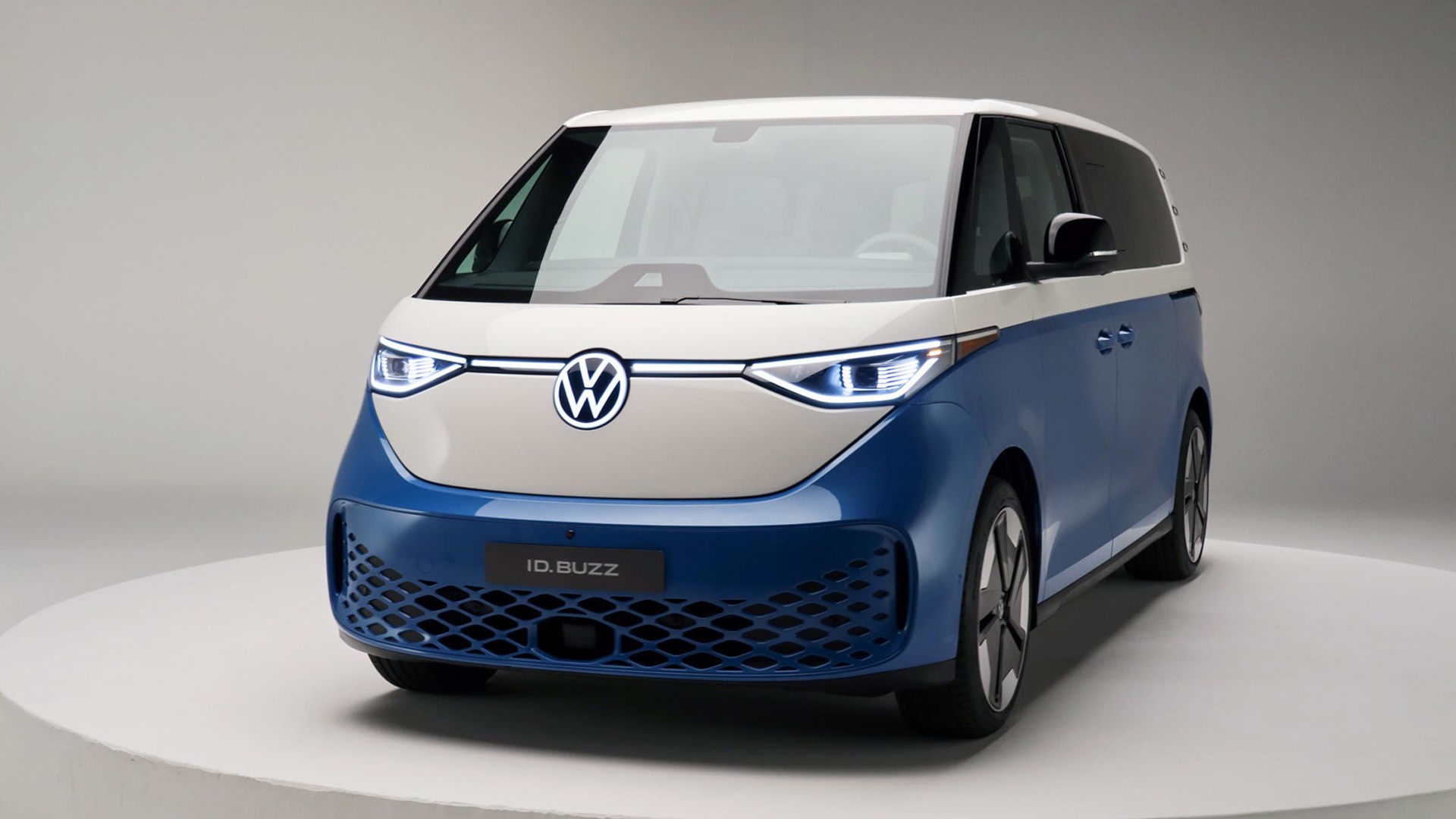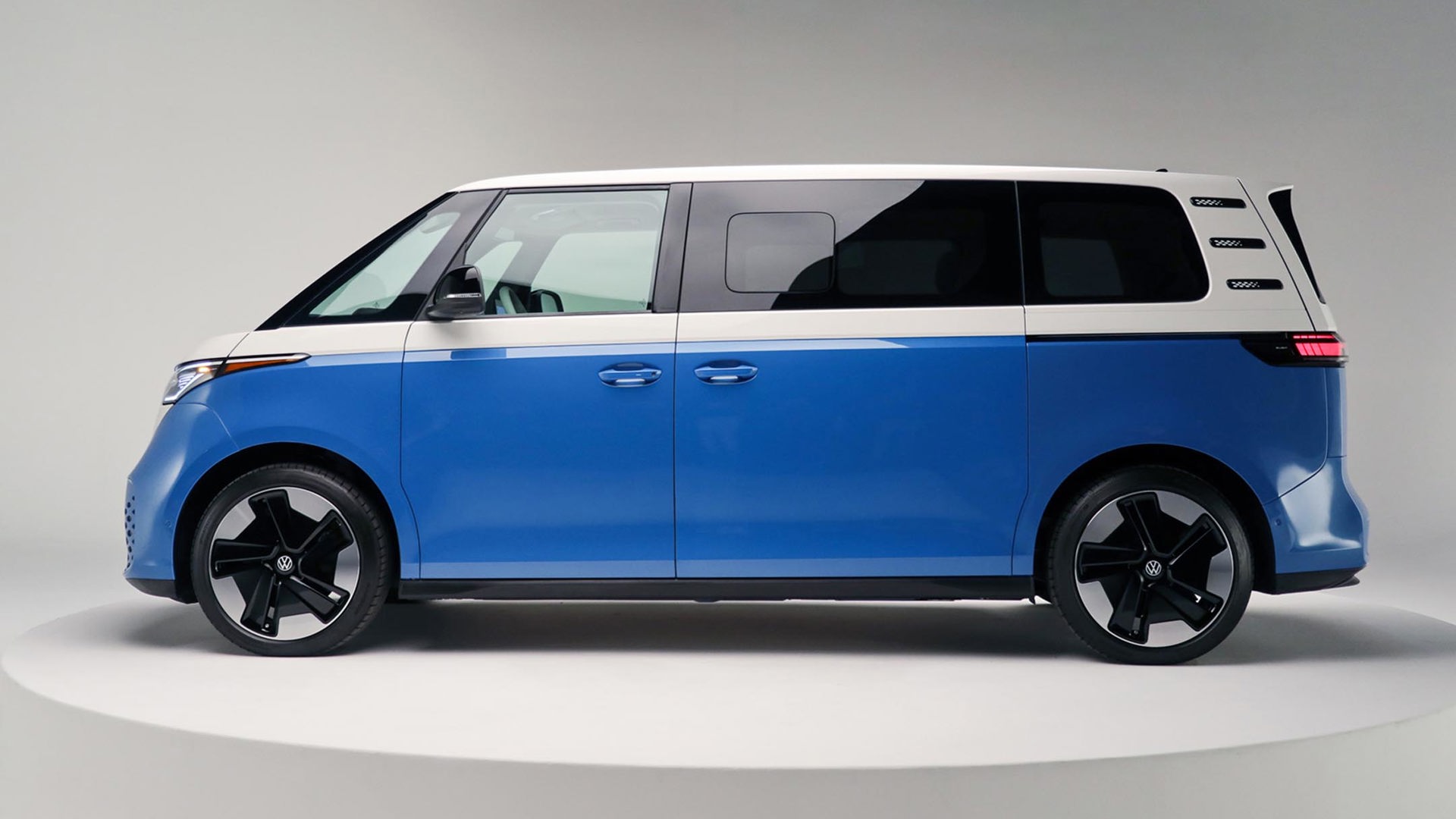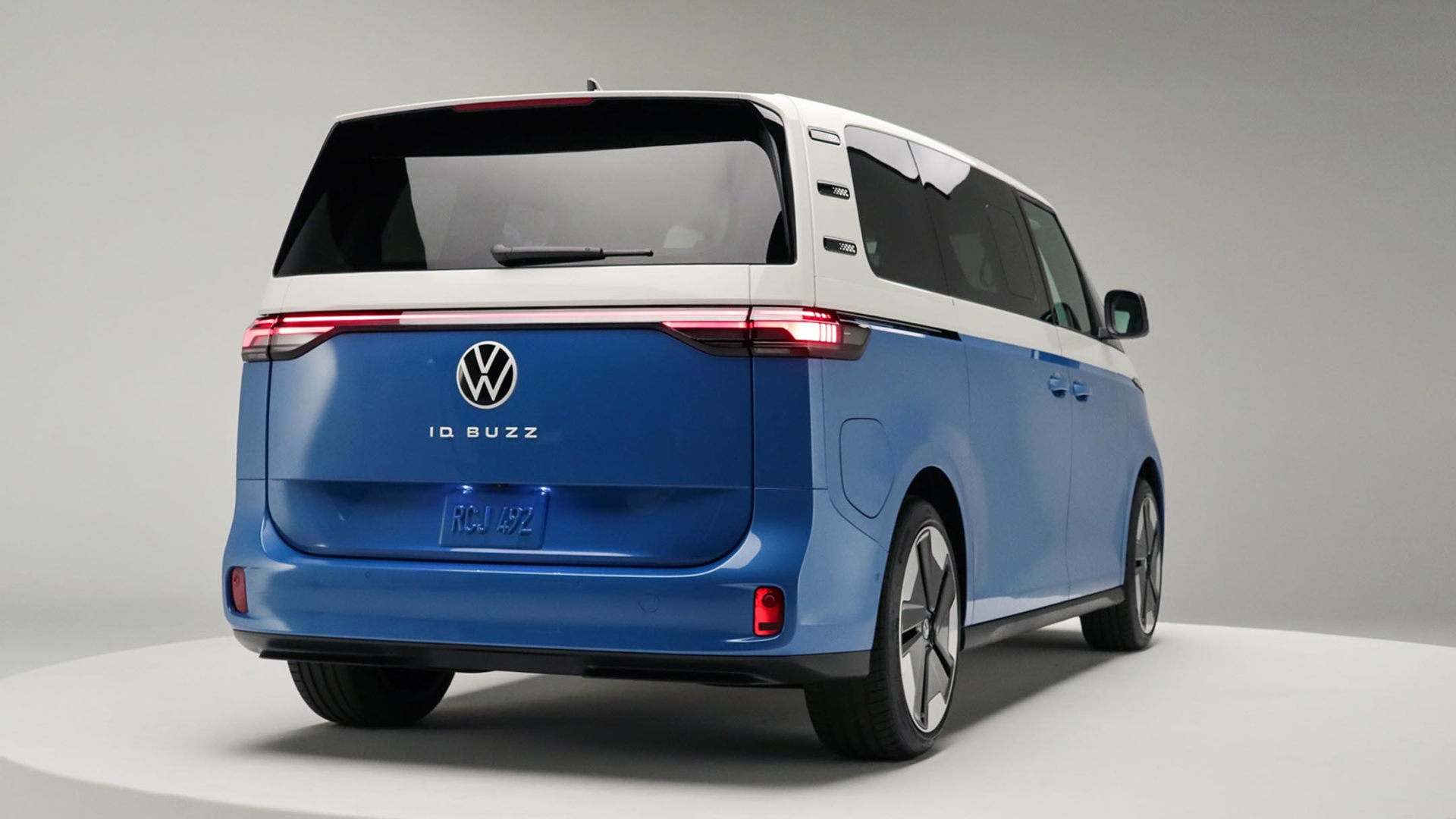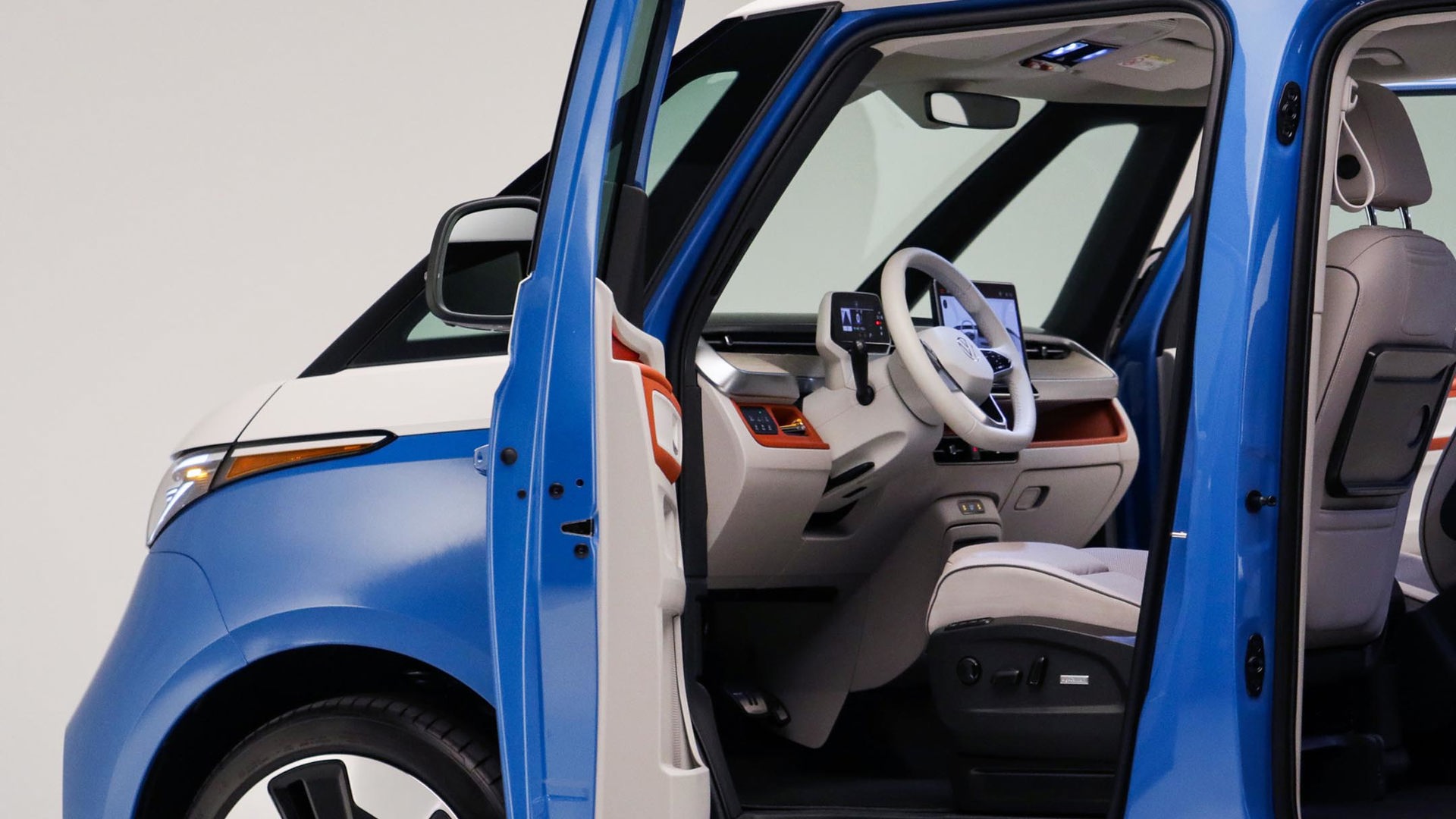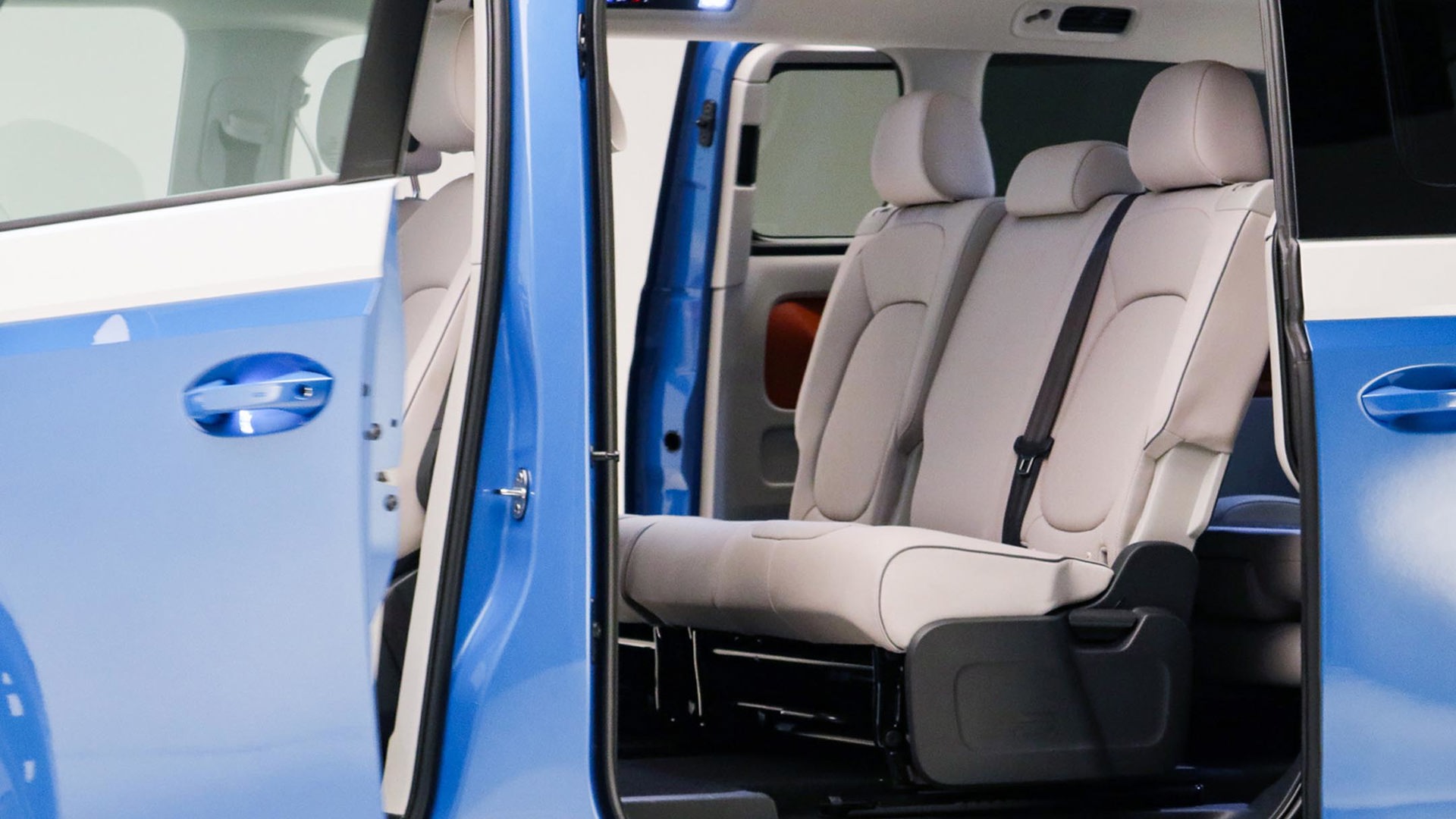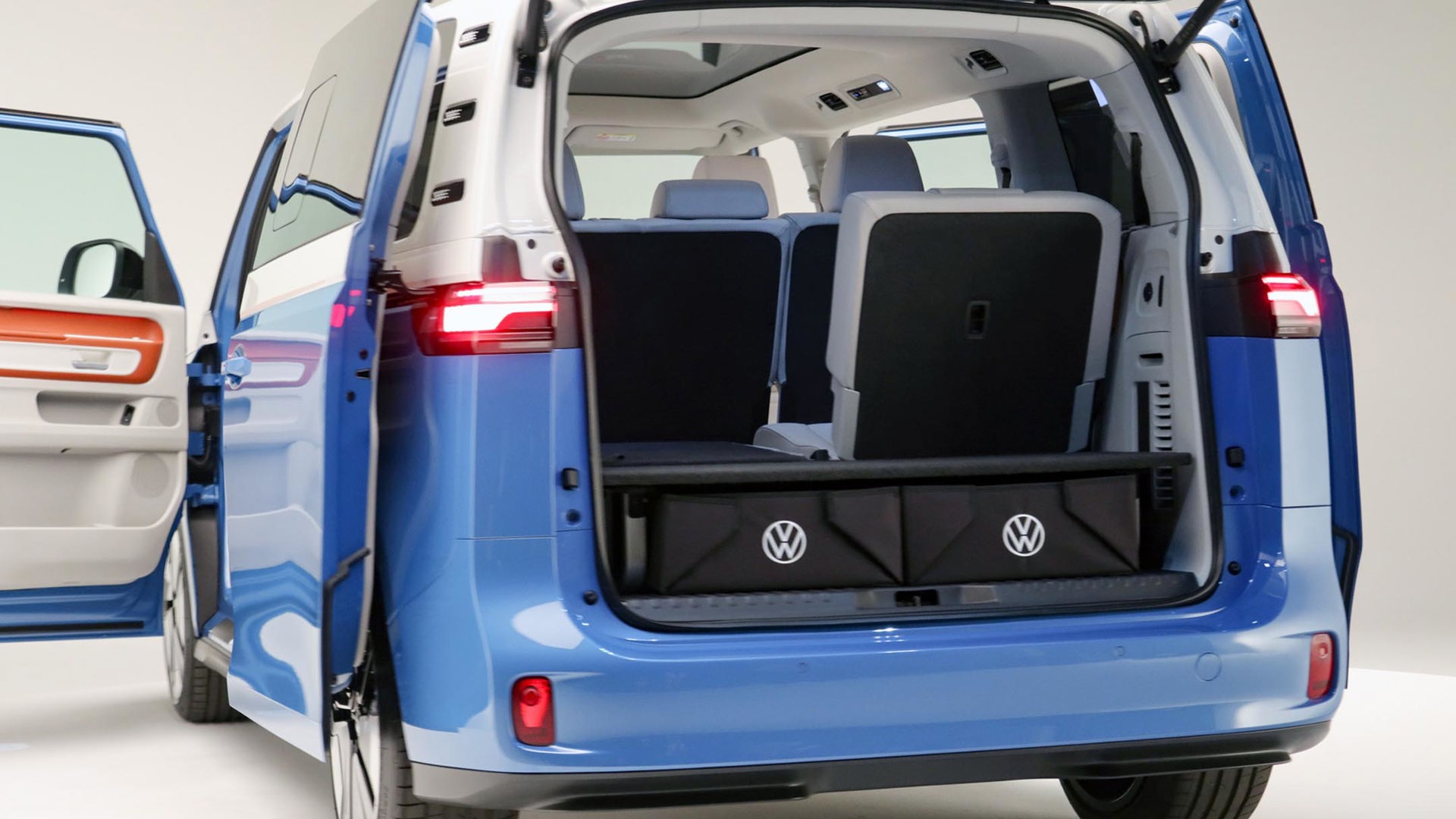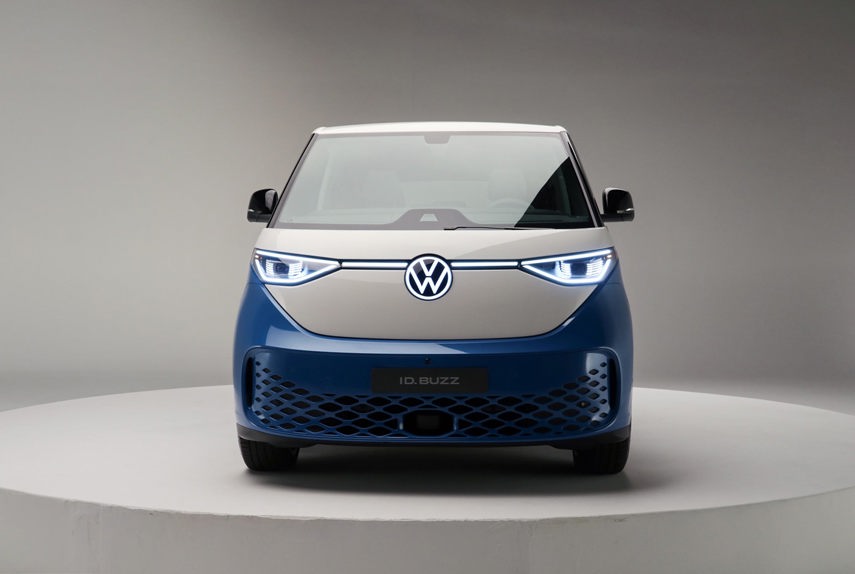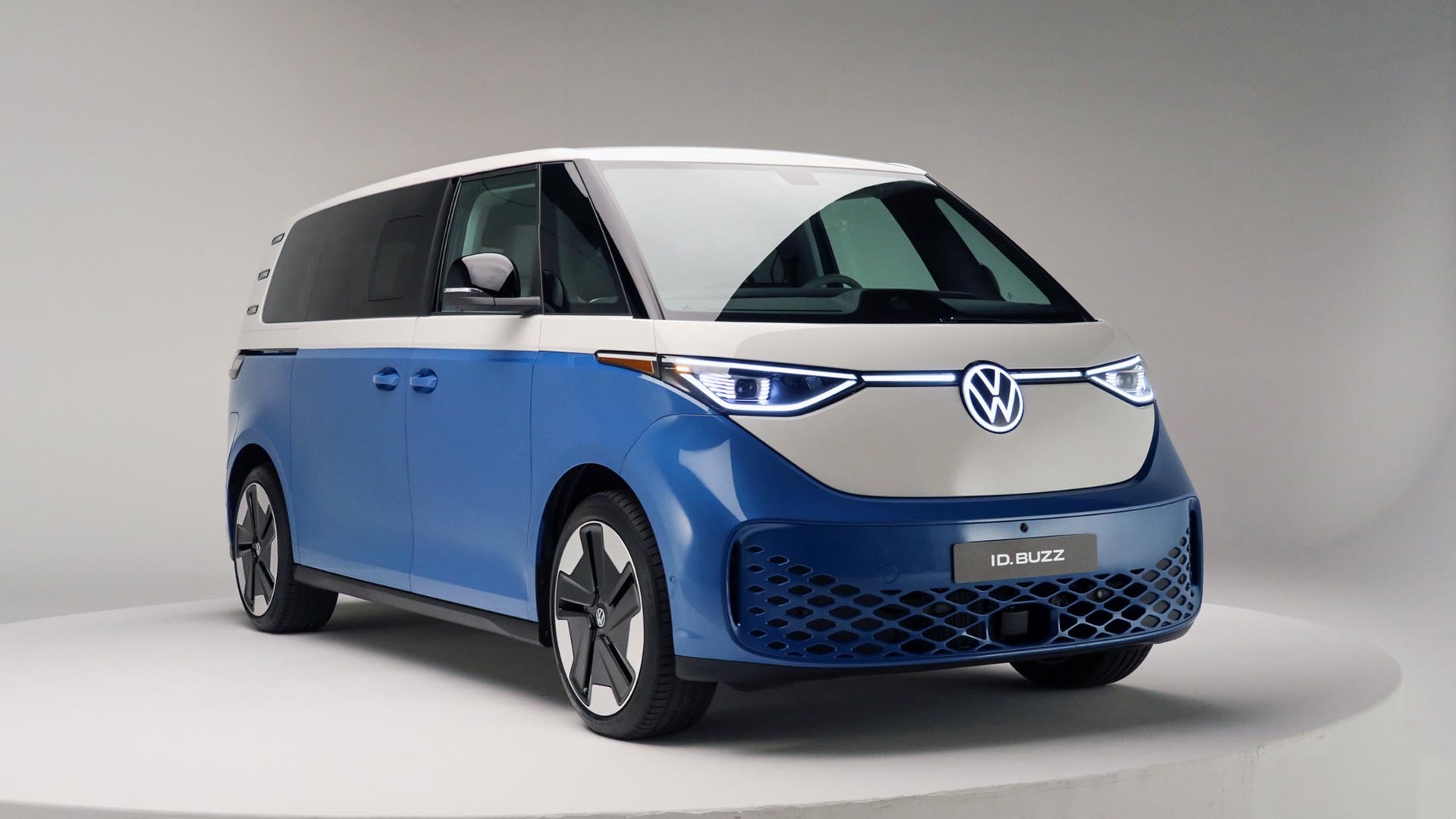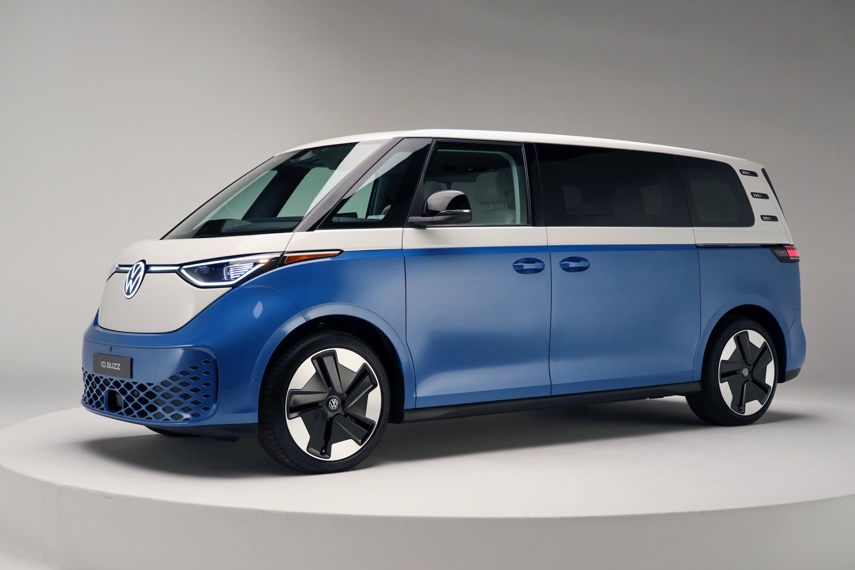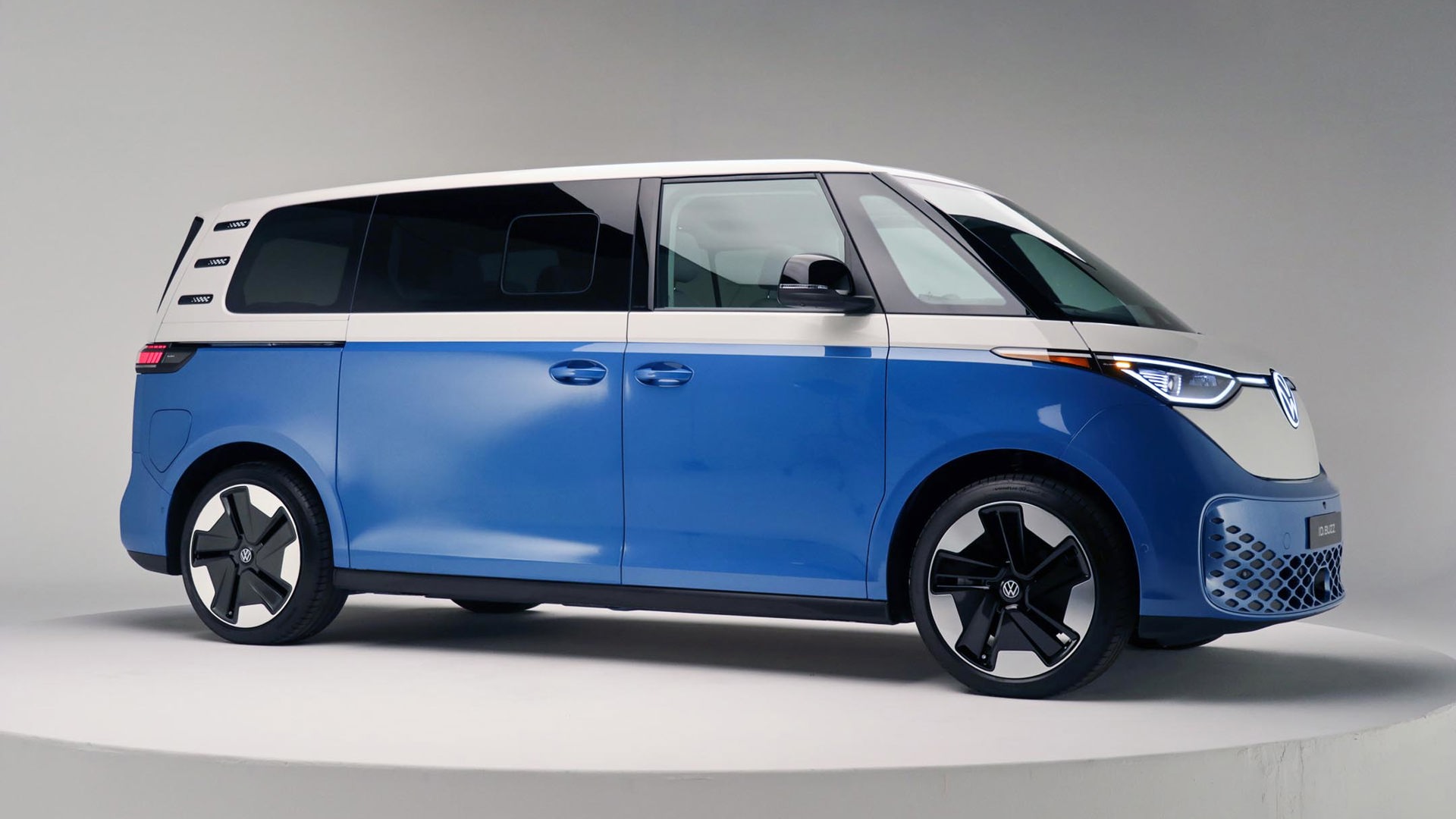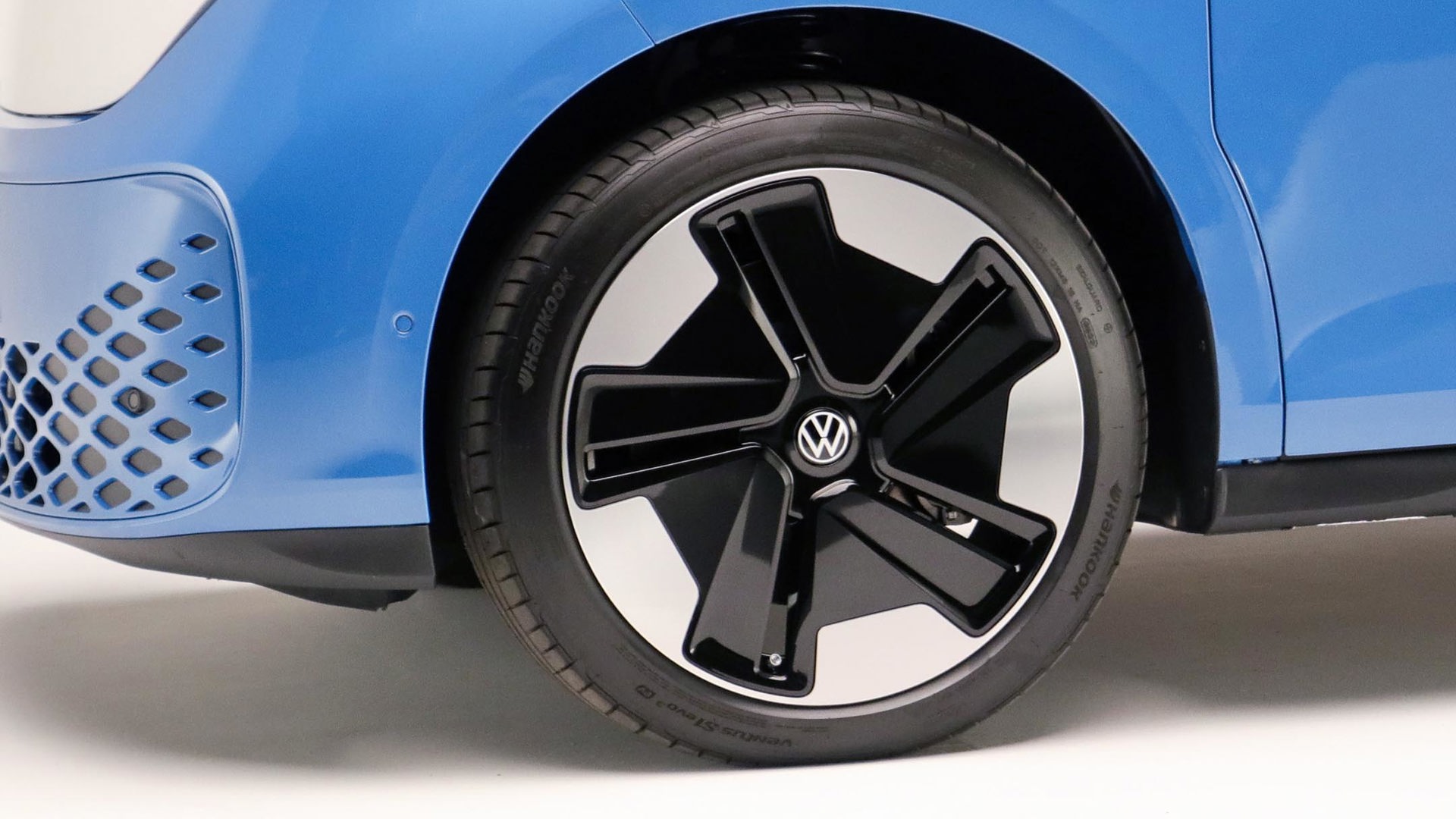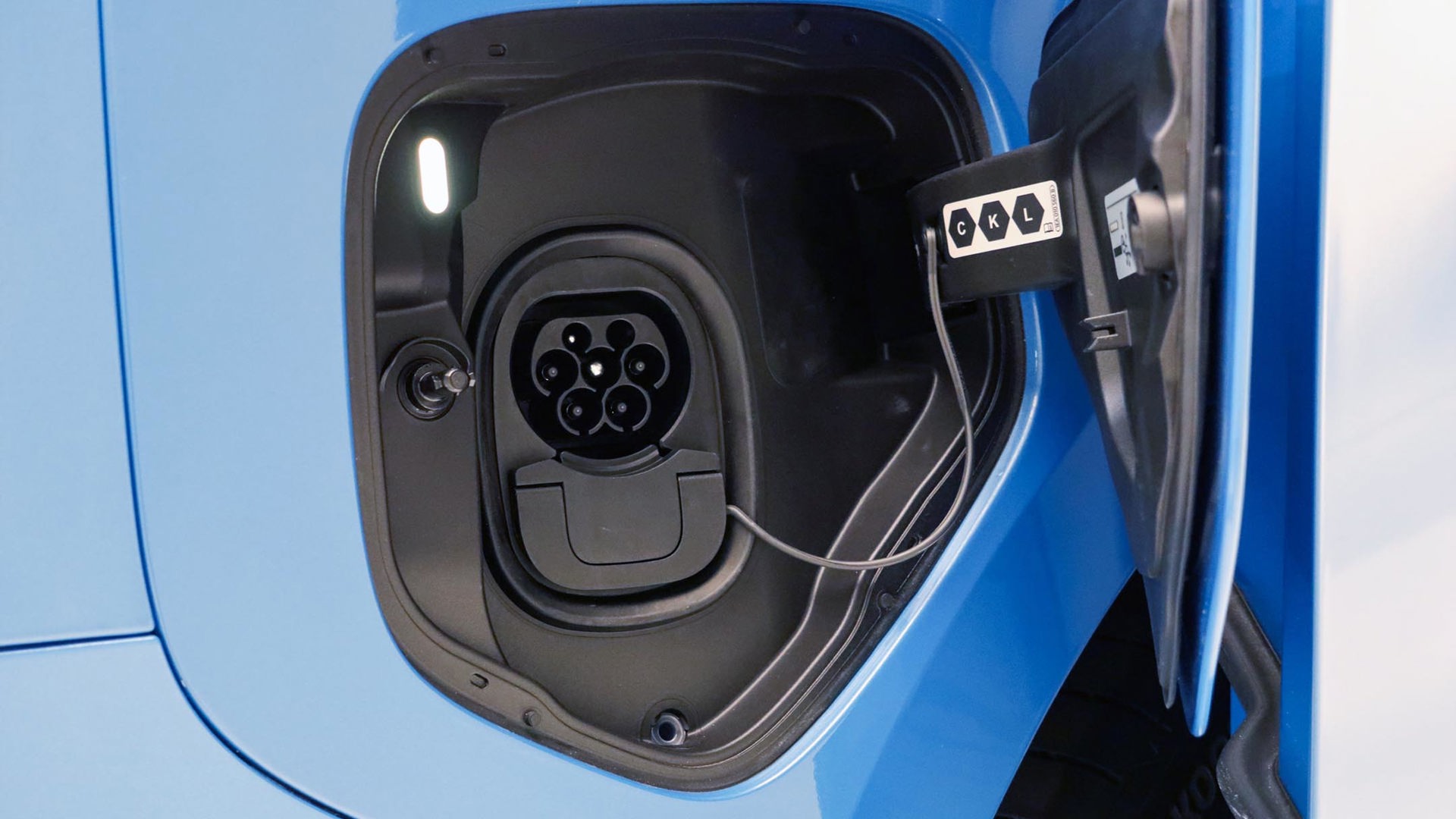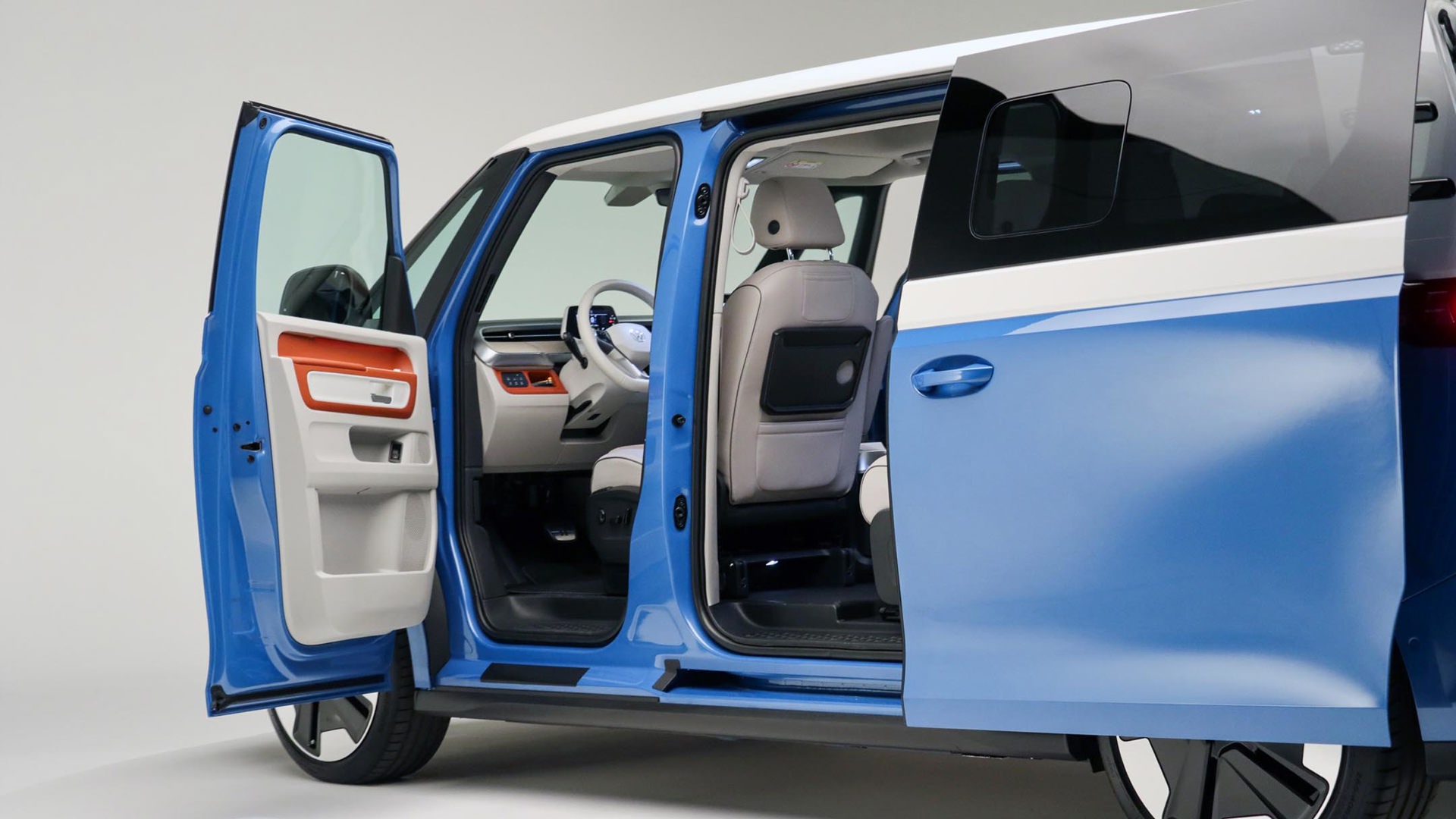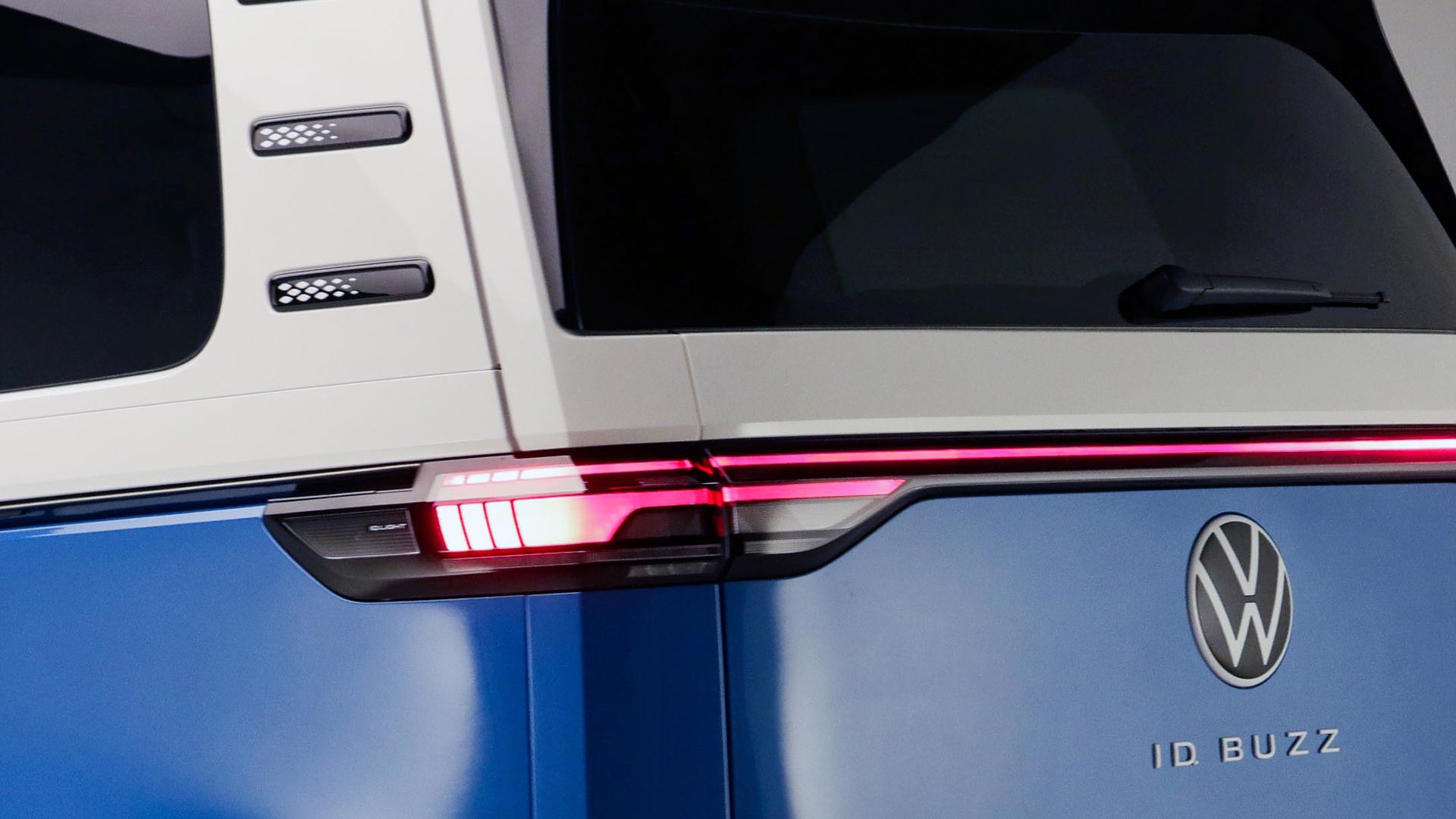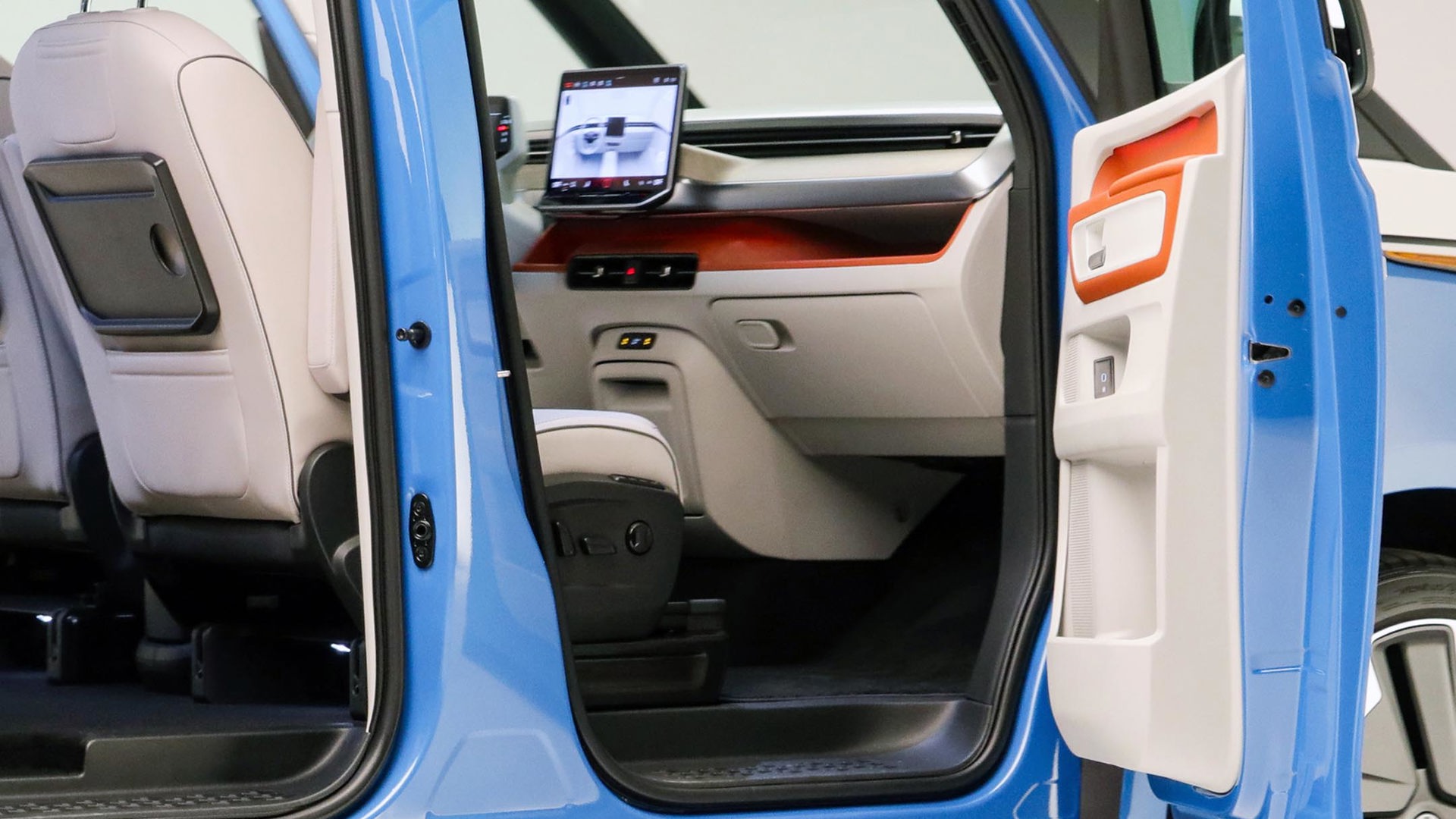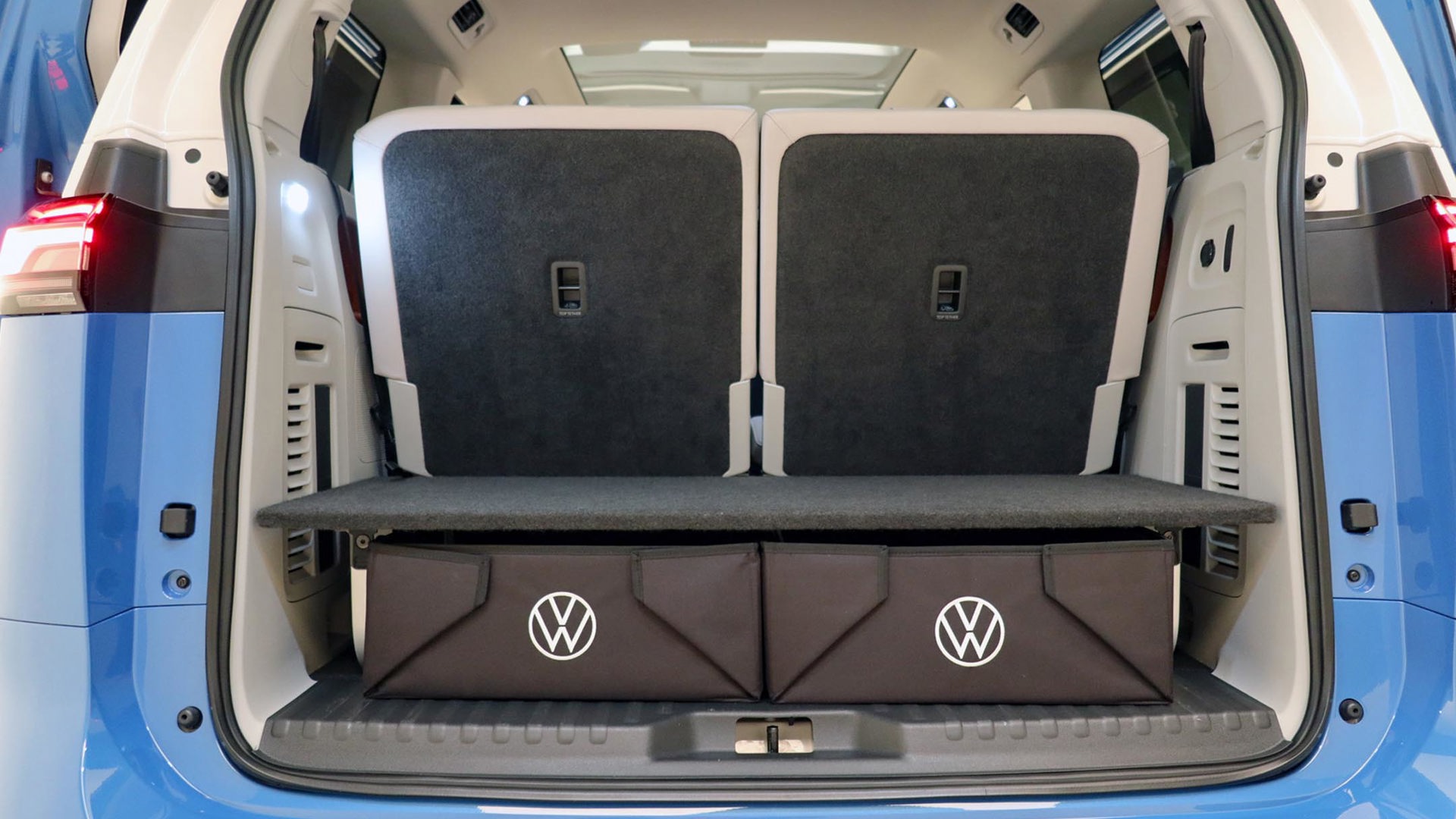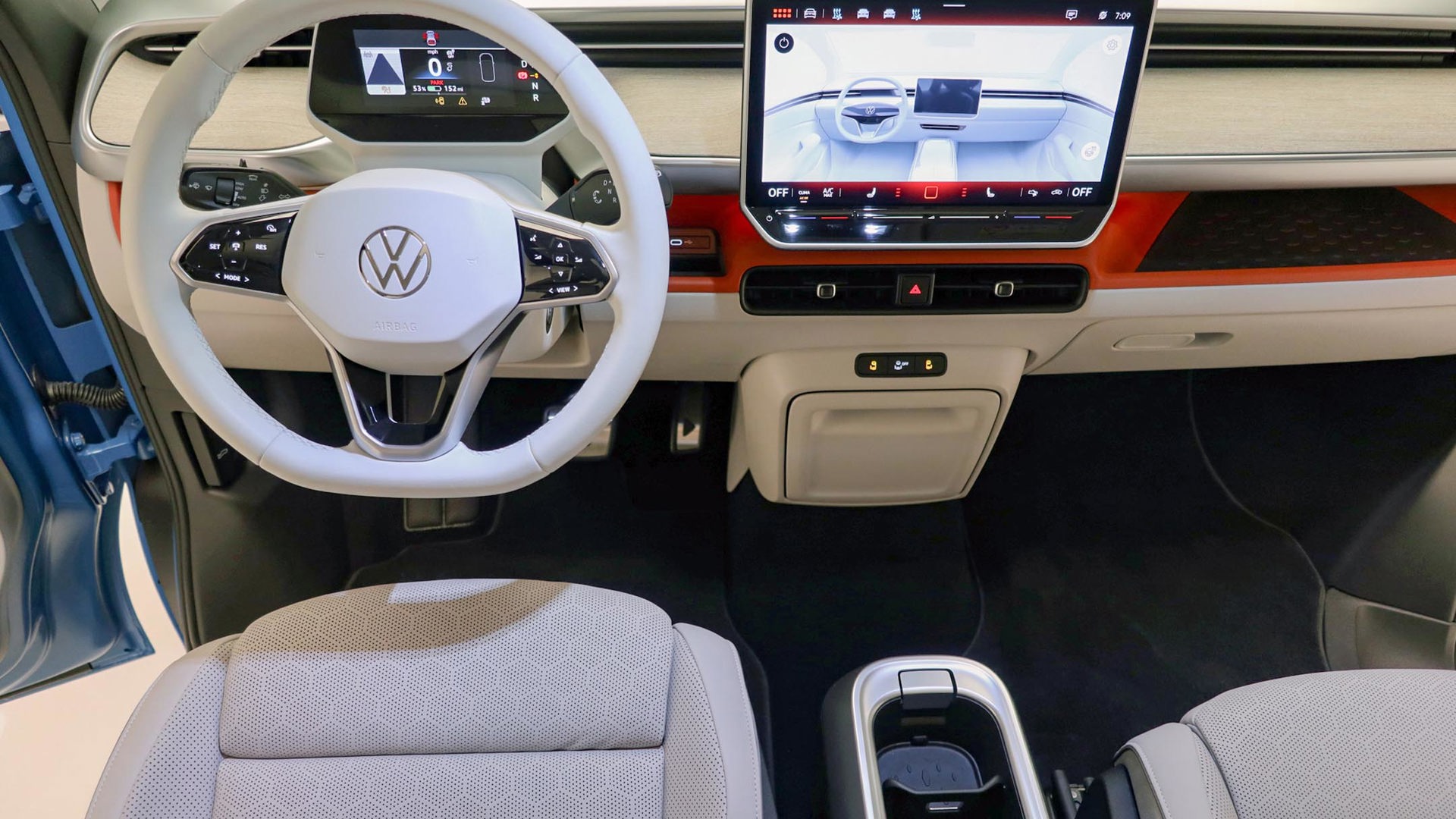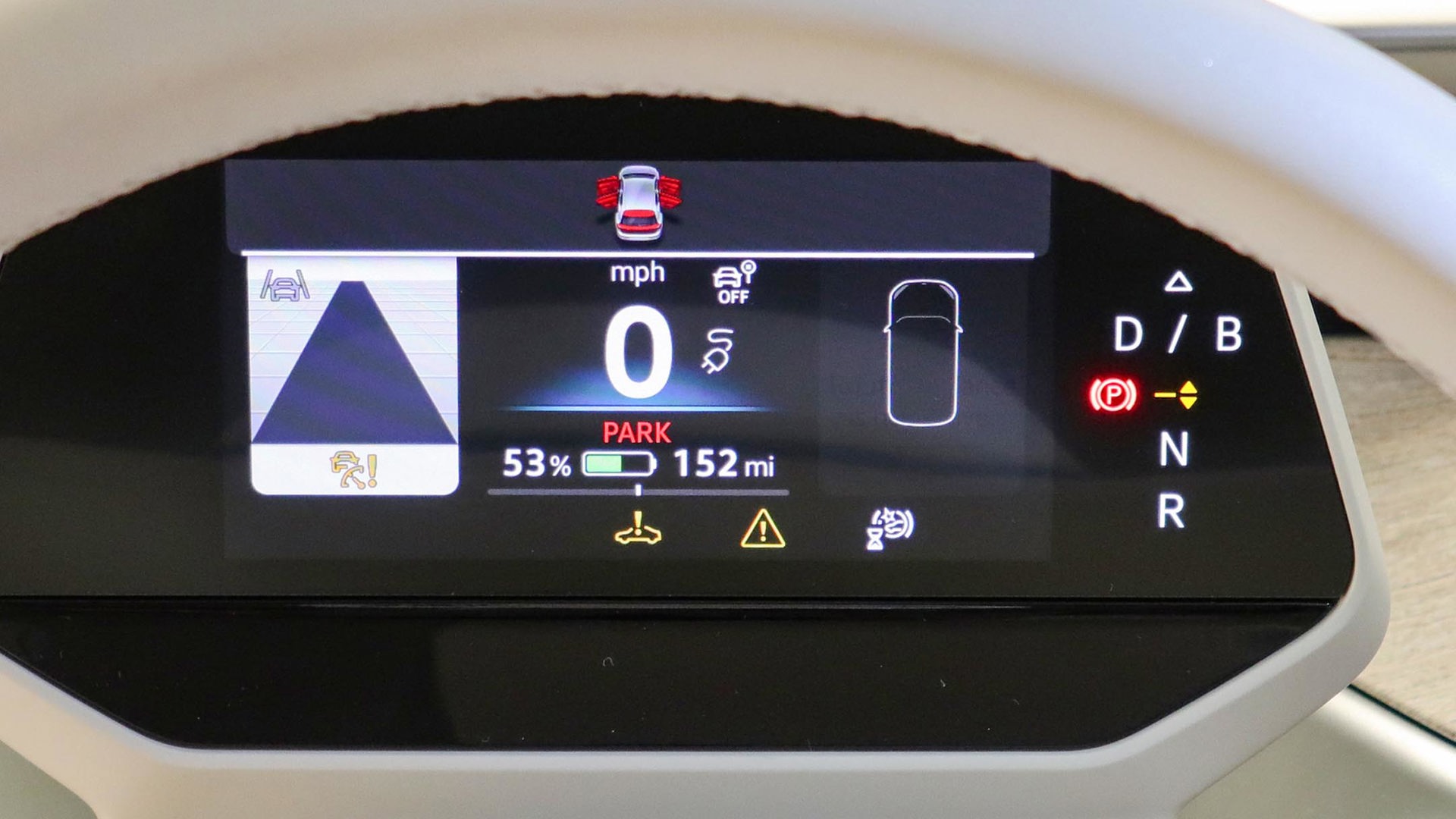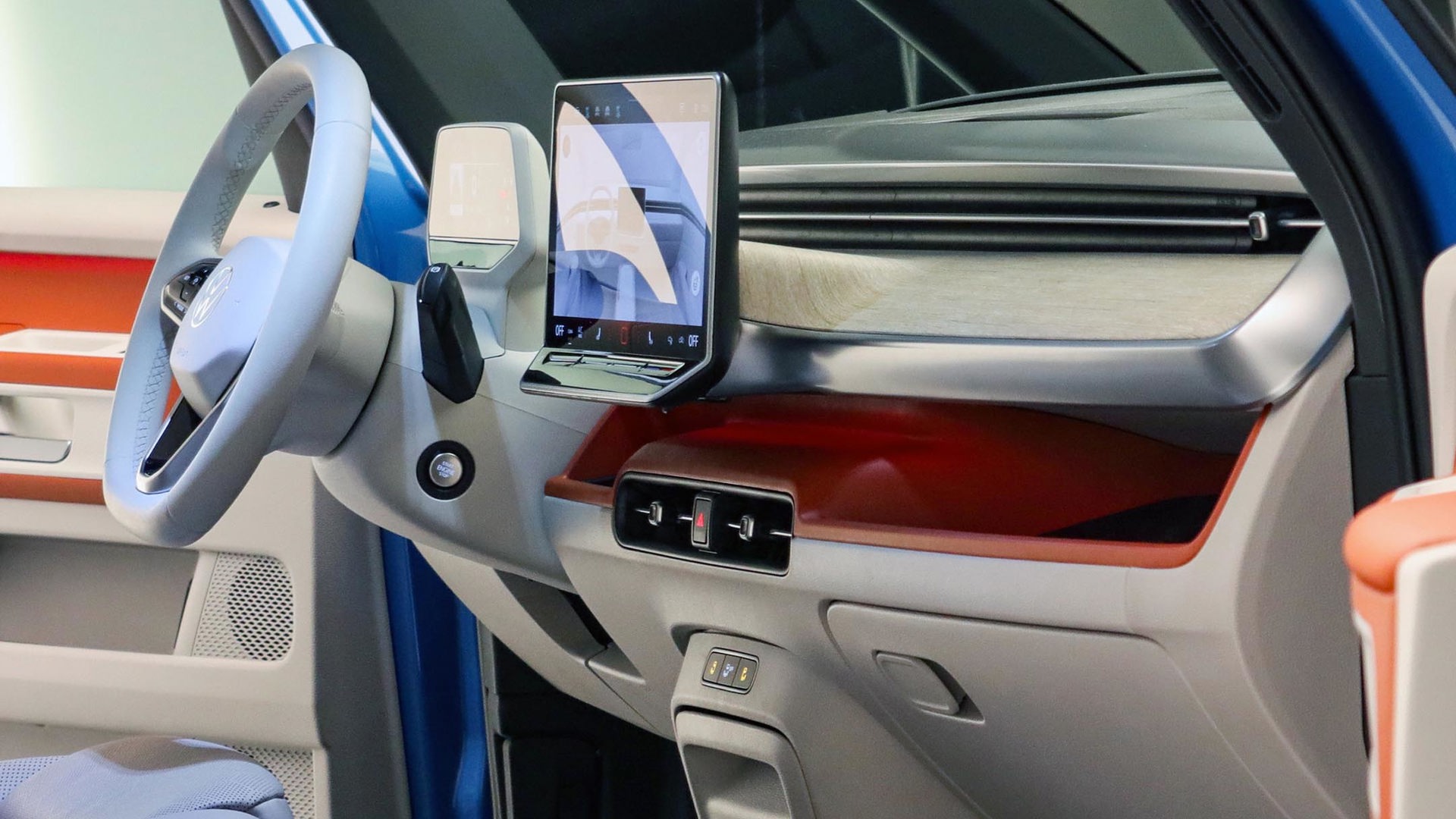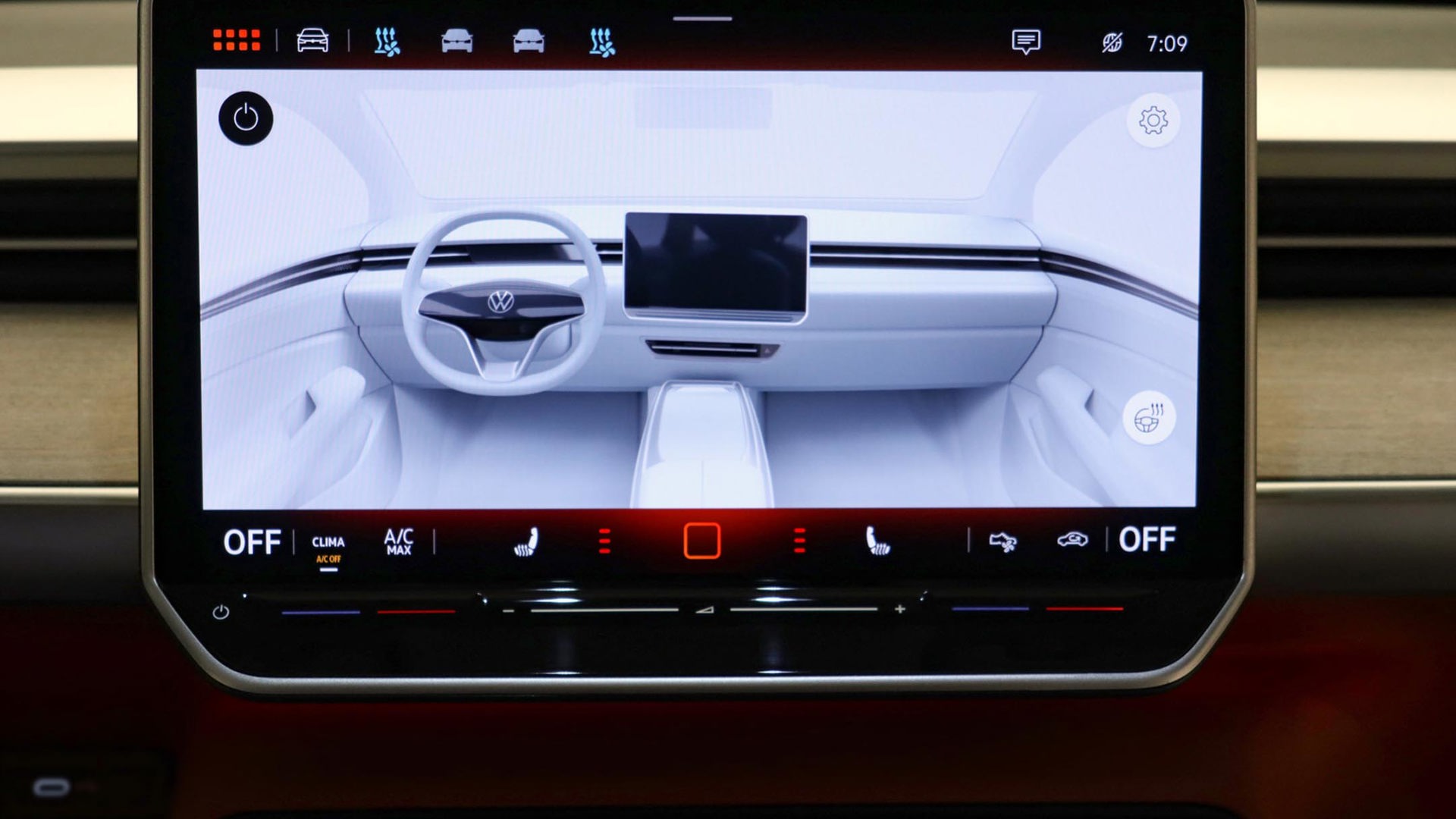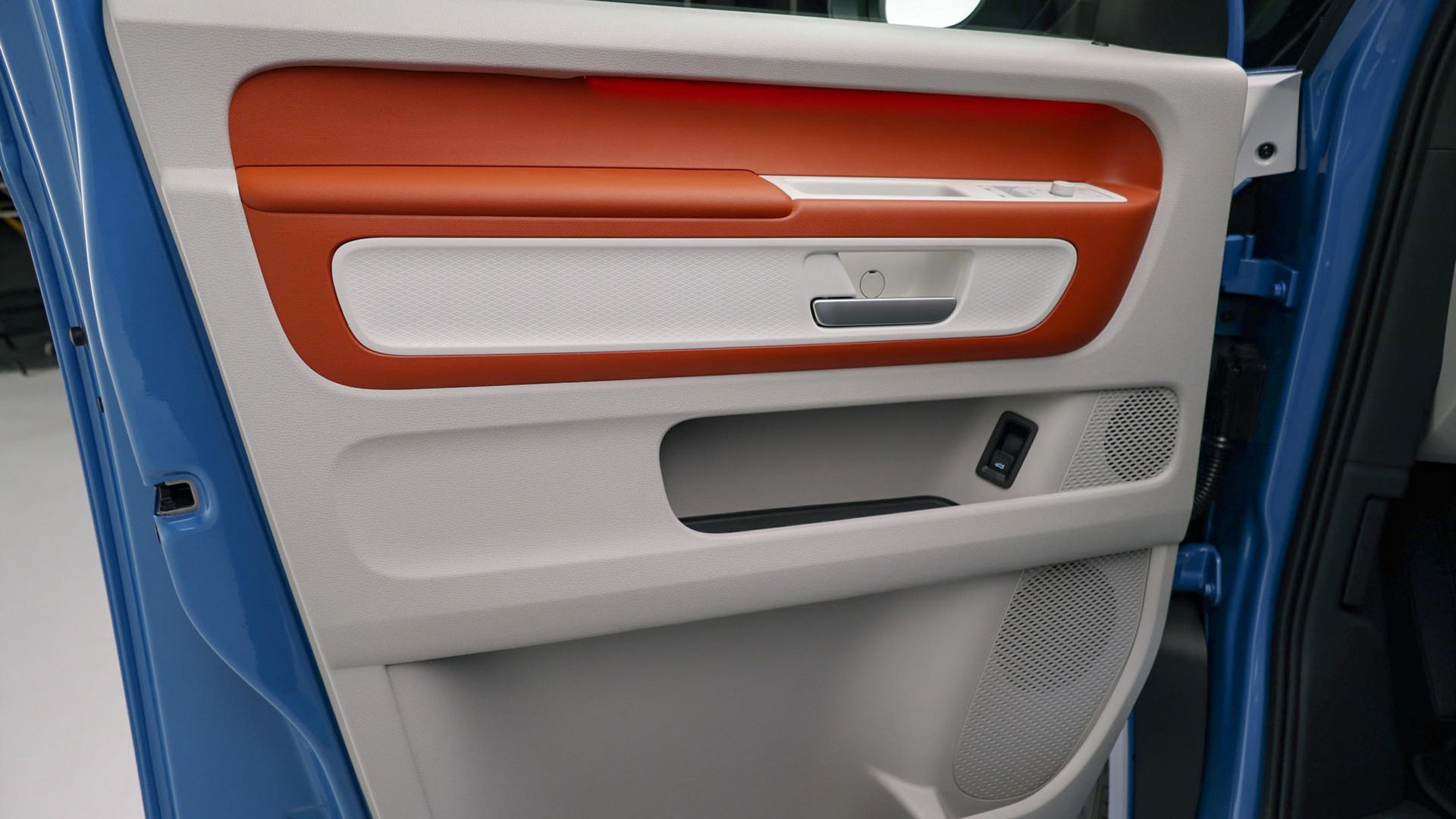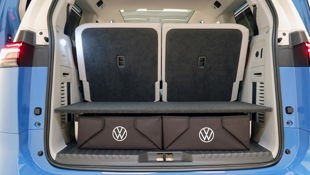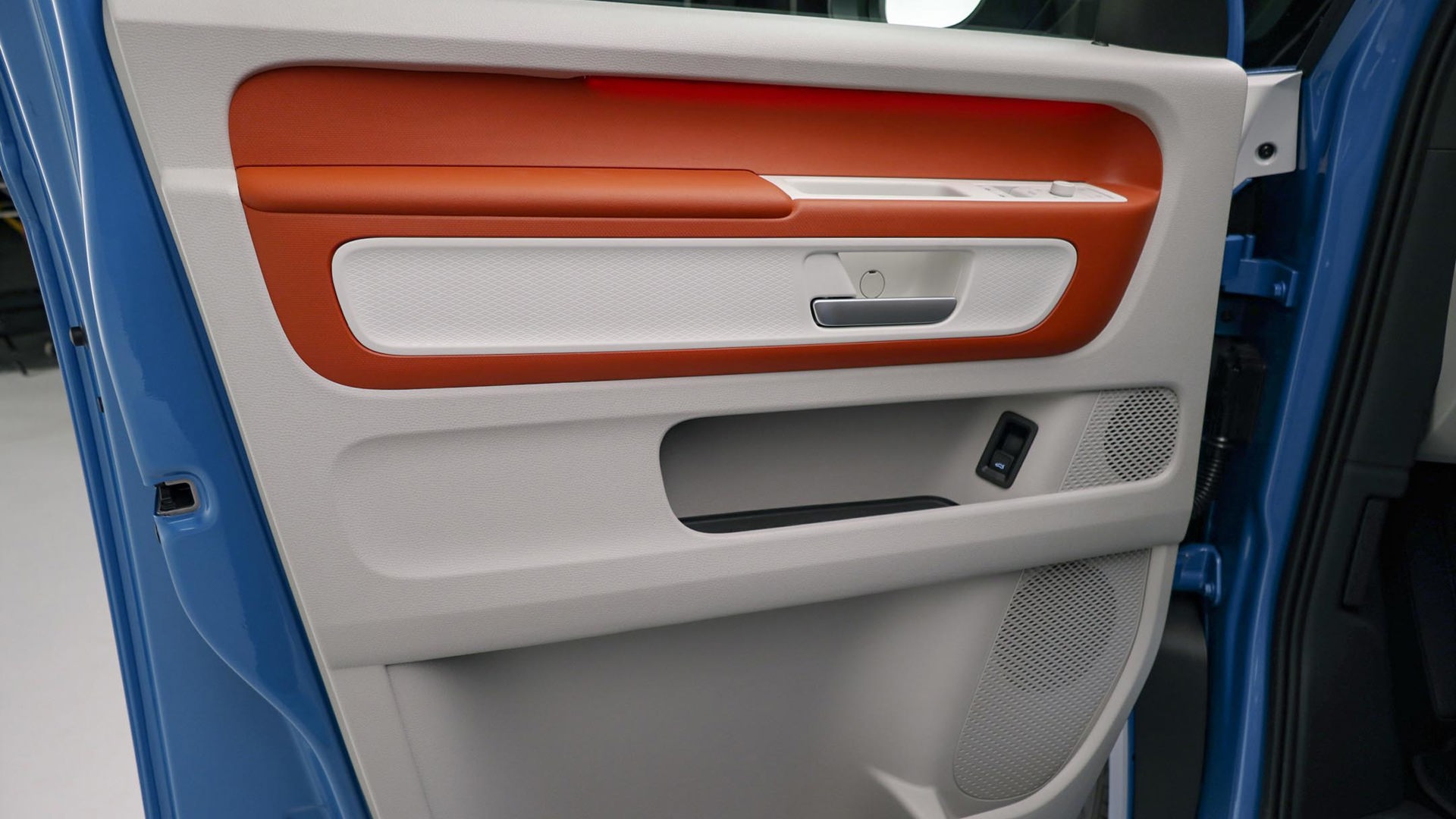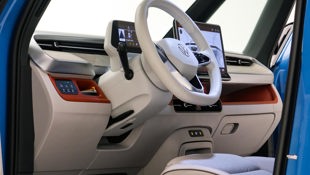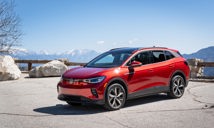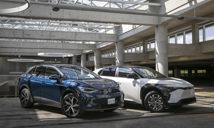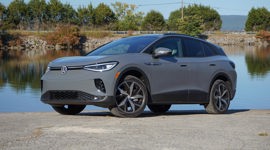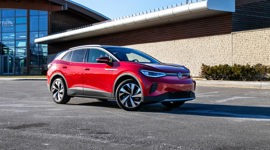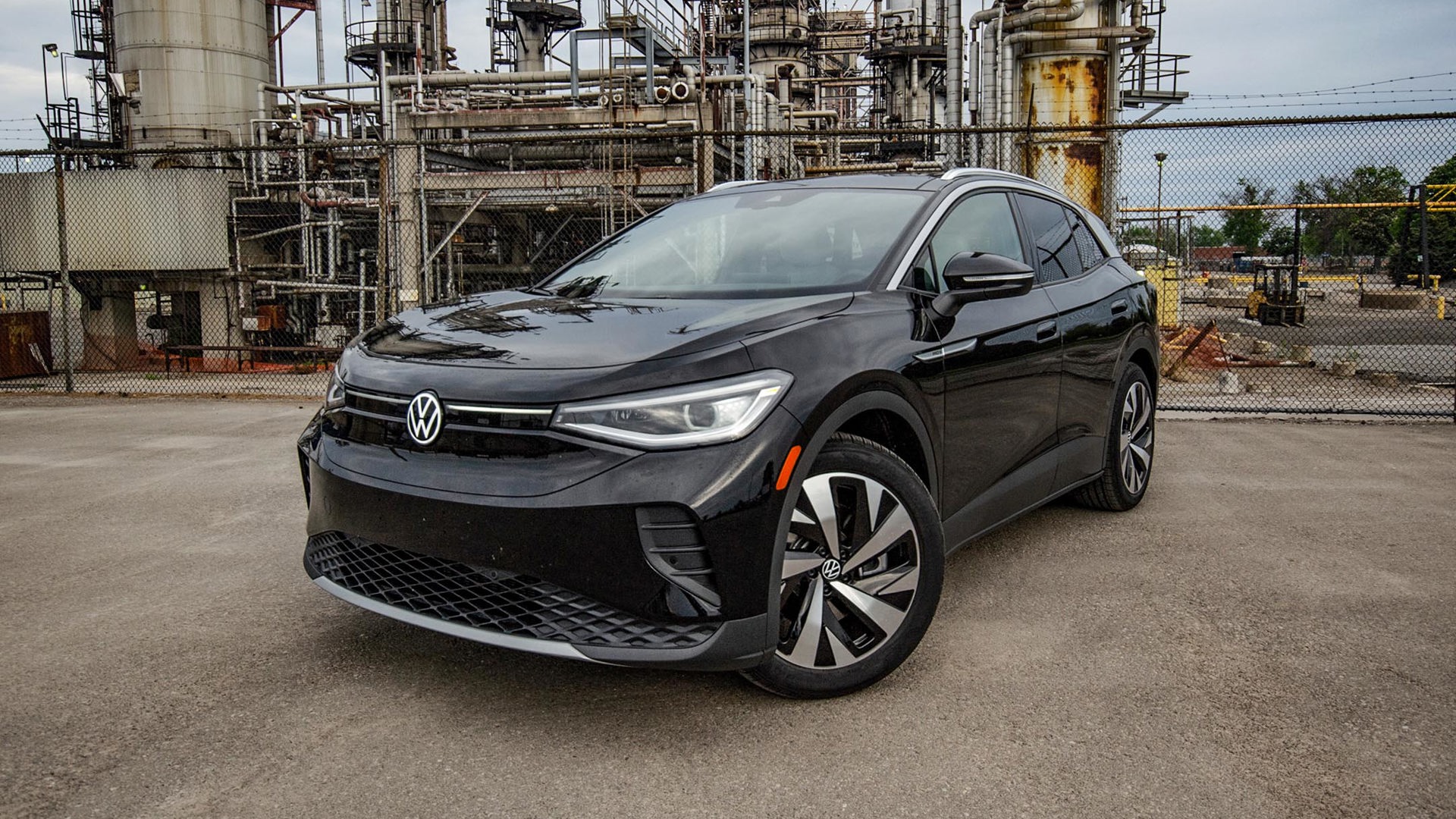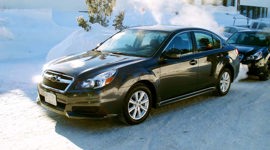Volkswagen may be making its living these days with vehicles like the Jetta and Atlas, but many people fondly recall its earliest models: the original punch-buggy Beetle, and the air-cooled Microbus van that descended from it. It’s one reason the German automaker went full retro with its new ID. Buzz.
This all-electric model, revealed alongside several hundred classic vans brought by their owners to the event in Huntington Beach, Calif., pays homage to that original design while being as up-to-date as others in the ID. family. The name indicates VW’s battery-only models, which include the ID.4 SUV and the upcoming ID.7 sedan. The Buzz will go on sale in Canada in 2024, with pricing yet to come.
Unveiling it on the California coast ties into the original Microbus’ popularity as a “surfer dude” wagon. Volkswagen expects the Buzz to appeal to outdoorsy people, such as campers or, yes, surfers, but at its heart, it’s a family vehicle – in essence, a way-cool minivan, complete with sliding doors and up to three rows of seats. The Buzz was initially unveiled in Europe last year as a shorter, two-row van. Instead, all North American versions will have a longer wheelbase with a larger battery and more horsepower.
The original VW van went into production in 1950. It was based on the Beetle’s underpinnings and, like that iconic car, had an air-cooled engine driving the rear wheels – and at just 30 horsepower, drivers had to be patient about getting where they were going.
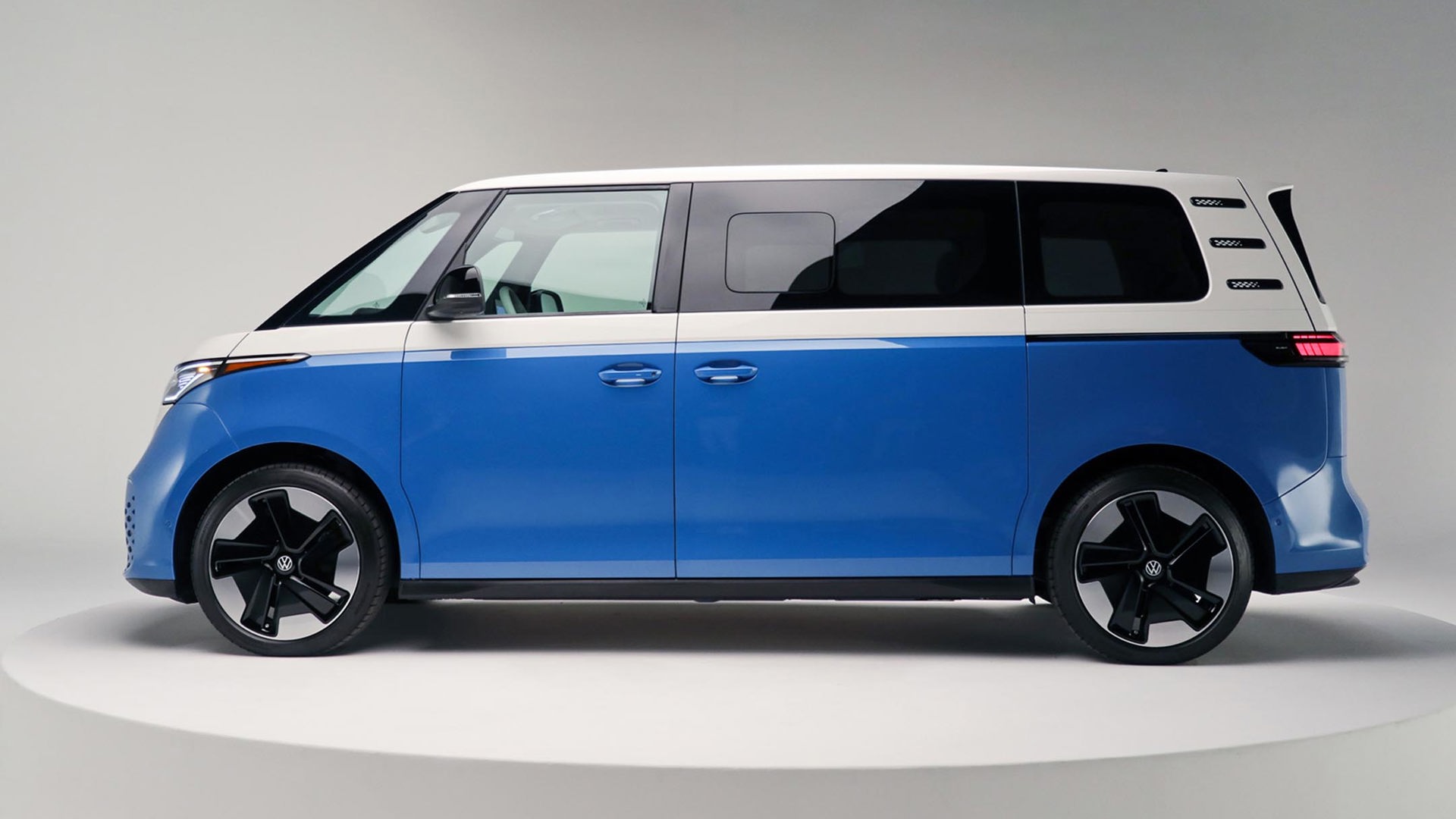
That shouldn’t be the case with the Buzz, of course. The electric motor is still in the back, but it makes 282 horsepower, along with 406 lb-ft of torque. An available all-wheel-drive (AWD) version adds a second electric motor for the wheels up front, increasing the van’s total output to 330 horsepower. Its top speed is electronically limited to 159 km/h – something the original bus could only imagine in its wildest dreams.
The Buzz’s battery is mounted under the floor, which preserves cabin space and gives a lower centre of gravity that helps improve handling. The North American Buzz’s extra length allows for a larger battery – 91 kWh, while the European version has an 82-kWh battery. Range hasn’t been announced, but on a model we photographed before the official unveiling, the instrument cluster showed 152 miles (244 km) on a battery charged to 53 per cent.
That first 1950 van was about the same length as the 2019 Beetle. In contrast, the ID. Buzz is only marginally shorter than the current Atlas Cross Sport SUV, and about as wide as the larger Atlas sport-utility but taller. American buyers will have a choice of six- or seven-passenger seating, but unique to Canada, there will be a third choice of five-passenger, with just two rows and expansive cargo space in the back. The bench seat can slide forward or back, depending on whether it’s the second- or third-row passengers who need the most legroom. Both rear rows fold flat for extra storage – you’ll also be able to order a board that fits between the seats to provide a flat cargo floor, complete with fabric storage bins under them – and on three-row models, the third row can be removed entirely.
And while the original Microbus was pretty plain inside, the Buzz will come standard with ventilated and massaging front seats, heated front and rear seats and steering wheel, wireless charger, eight USB-C ports, dual power-sliding doors, hands-free power liftgate, and removable centre console. The dividers in that bin can double as bottle openers or as ice scrapers, should you not opt for the available heated windshield. A panoramic glass roof will also be offered, with electrochromic tinting that can be switched from clear to dark, depending on how much sunshine you prefer.
Volkswagen’s recently been moving away from physical knobs and dials – as is the case with many all-electric vehicles, although it isn’t the greatest idea for reducing driving distraction – and the ID. Buzz follows through with most functions ensconced behind glass, including the climate control. The centre display is a 12.9-inch touchscreen, while the 5.3-inch instrument cluster screen sits behind the steering wheel, both of them mounted tablet-style.
The handsome horizontal dash includes woodgrain-style accents that are carried through the cabin. A light strip below the windshield pulses to indicate that the Buzz is on and ready to drive; that a call is coming in on a connected phone; that it’s time to turn, as per the navigation system; or a front collision avoidance warning.
Likewise, the Buzz is well-lit outside, with an illuminated centre badge reminiscent of the original Microbus’ large logo, and horizontal light strips that connect it to the LED headlights. Bright exterior colours are offered, along with an available two-tone paint scheme.
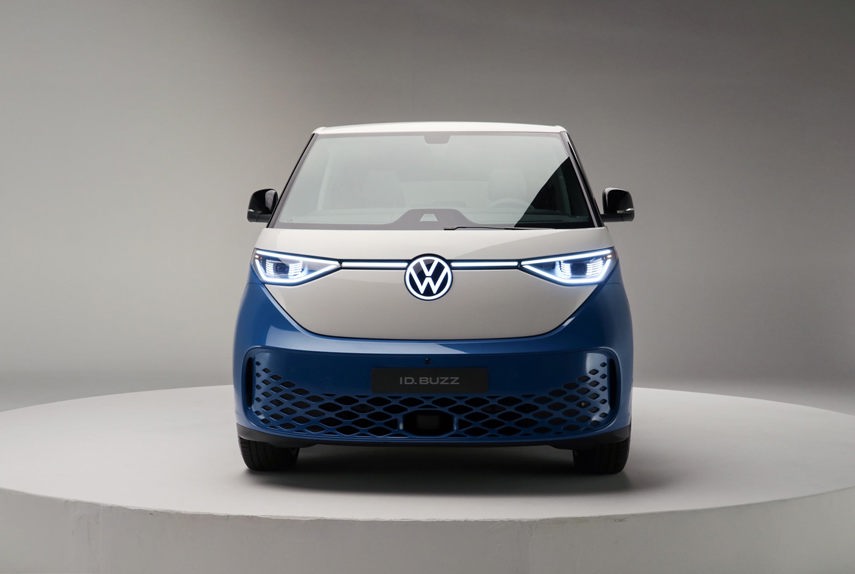
Some other automakers have introduced retro-styled vehicles in the past, but after an initial flurry of sales, they failed to garner long-term success. According to Andrew Savvas, executive VP of North American sales and marketing, the plan is to keep the Buzz fresh with facelifts, new technology, and maybe even variants, such as camper vans. It is a halo car, meant to bring attention to the brand, but it’s also expected to pay its own way too.
Volkswagen built 3.5 million copies of the original VW bus and its subsequent generations over more than six decades. Whether the new, fuel-free version will do as well remains to be seen, but with all this buzz on the ID. Buzz, expect it to be a pretty hot model when it finally goes on sale.
